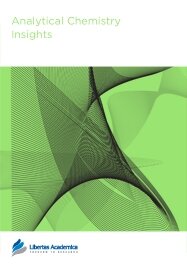

Publication Date: 31 Jan 2008
Journal: Analytical Chemistry Insights

1Department of Dermatology and Venereology, Sahlgrenska University Hospital, S-413 45 Göteborg, Sweden. 2Department of Clinical Chemistry/Transfusion Medicine, Sahlgrenska University Hospital, S-413 45 Göteborg, Sweden. 3 Current address SCA.
Abstract
Background: Benzophenone-3 (BZ-3) is a common ultraviolet (UV) absorbing compound in sunscreens. It is the most bioavailable species of all UV-absorbing compounds after topical application and can be found in plasma and urine.
Objectives: The aim of this study was to develop a reverse-phase high performance liquid chromatography (HPLC) method for determining the amounts BZ-3 and its metabolite 2,4-dihydroxybenzophenone (DHB) in human urine. The method had to be suitable for handling a large number of samples. It also had to be rapid and simple, but still sensitive, accurate and reproducible. The assay was applied to study the urinary excretion pattern after repeated whole-body applications of a commercial sunscreen, containing 4% BZ-3, to 25 healthy volunteers.
Methods: Each sample was analyzed with regard to both conjugated/non-conjugated BZ-3 and conjugated/non-conjugated DHB, since both BZ-3 and DHB are extensively conjugated in the body. Solid-phase extraction (SPE) with C8 columns was followed by reverse-phase HPLC. For separation a Genesis C18 column was used with an acethonitrile-water mobile phase and the UV-detector was set at 287 nm.
Results: The assay was linear r2 > 0.99, with detection limits for BZ-3 and DHB of 0.01 μmol L−1 and 0.16 μmol L−1 respectively. Relative standard deviation (RSD) was less than 10% for BZ-3 and less than 13% for DHB.The excretion pattern varied among the human volunteers; we discerned different patterns among the individuals.
Conclusions: The reverse-phase HPLC assay and extraction procedures developed are suitable for use when a large number of samples need to be analyzed and the method fulfilled our objectives. The differences in excretion pattern may be due to differences in enzyme activity but further studies, especially about genetic polymorphism, need to be performed to verify this finding.
PDF (331.13 KB PDF FORMAT)
RIS citation (ENDNOTE, REFERENCE MANAGER, PROCITE, REFWORKS)
BibTex citation (BIBDESK, LATEX)
XML
PMC HTML

I have published more than thirty research papers in internationally reputed high impact factor journals including Libertas Academica publications, Proteomics Insights and Analytical Chemistry Insights. I have no hesitation in saying that Proteomics Insights is highly efficient for its rapid and high quality review process and keeping the authors informed at each stage of the publication process. I recommend this journal for students, teachers and research workers who wish to publish their work. ...

All authors are surveyed after their articles are published. Authors are asked to rate their experience in a variety of areas, and their responses help us to monitor our performance. Presented here are their responses in some key areas. No 'poor' or 'very poor' responses were received; these are represented in the 'other' category.See Our Results
Copyright © 2013 Libertas Academica Ltd (except open access articles and accompanying metadata and supplementary files.)
FacebookGoogle+Twitter
PinterestTumblrYouTube